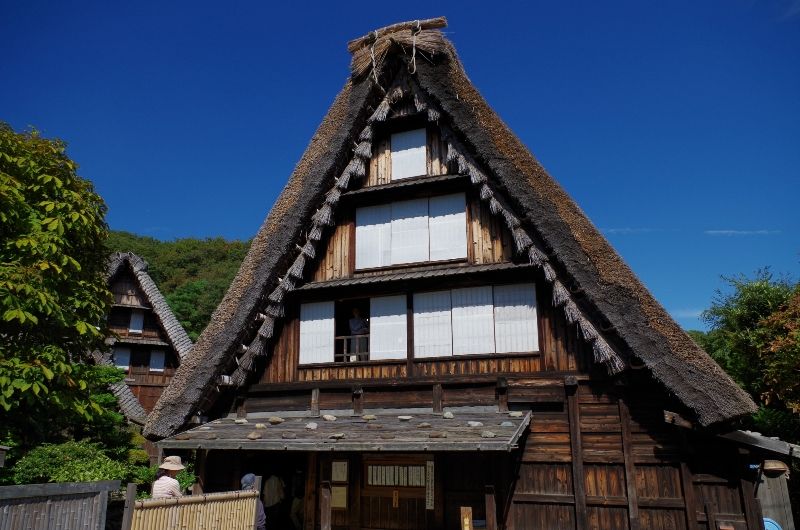A decorative adjustable hook called a jizaikagi hangs from the ceiling above the pit can be used to suspend a pot over the fire.
Traditional japanese house roof.
The four fundamental forms of japanese roof design.
Minka are characterized by their basic structure their roof structure and their roof shape.
They consist of a stone lined square pit built into the center of a floor.
Other traditional roofing materials include timber shingles called kokera buki and hiwada buki shingles made from cypress bark.
The purpose of this study is to analyze the typology and the composition of the roofs in japanese traditional architecture initially we will see which are the basic roof forms roofing materials and roof trusses normally used in japanese traditional.
The roof is the most visually impressive component often constituting half the size of the whole edifice.
One characteristic of japanese houses is that they have a large roof and deep eaves to protect the house from the hot summer sun and the frame of the house supports the weight of the roof.
The roof is the dominant feature of traditional japanese architecture.
Minka the traditional farmhouses of japan represent a wonderful but fast disappearing japanese architectural style they are generally constructed of heavy and often uneven timbers bamboos thatched roof and mud walls in spite of their charm minka are often dark and cold lack modern conveniences and are very expensive to re thatch and maintain.
Minka developed through history w.
Taruki 垂木 rafters.
The wooden floor of a traditional japanese house is covered with rectangular tatami mats which are made from straw but with a top layer of woven grass.
In the old days the walls of houses were made of woven bamboo plastered with earth on both sides.
Minka are vernacular houses constructed in any one of several traditional japanese building styles.
Japanese home design japanese tea house traditional japanese house japanese interior asian architecture architecture details pavilion architecture sustainable architecture residential architecture.
The roof tiles commonly seen nowadays on traditional style homes in japan became common during the latter part of the eighteenth century.
In the context of the four divisions of society minka were the dwellings of farmers artisans and merchants.
2 the slightly curved eaves extend far beyond the walls covering verandas and their weight must therefore be supported by complex bracket systems called tokyō in the case of temples and shrines.

